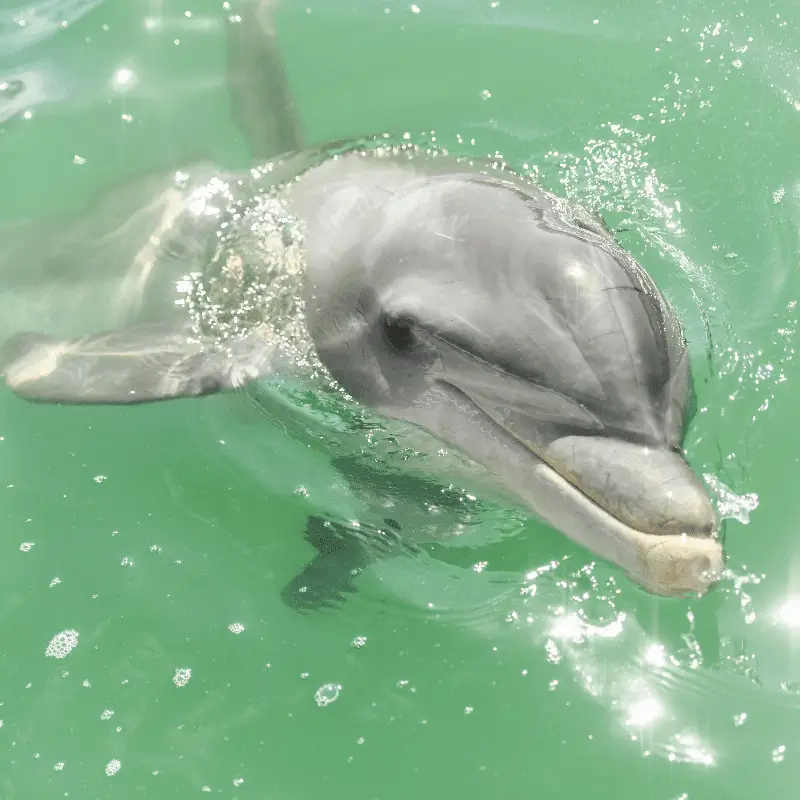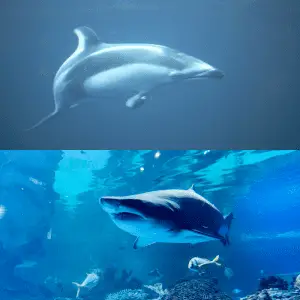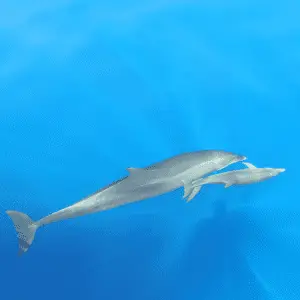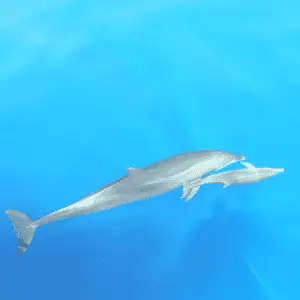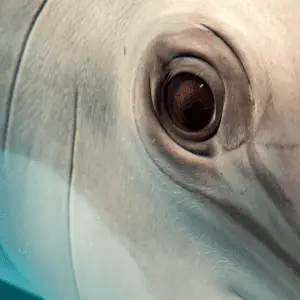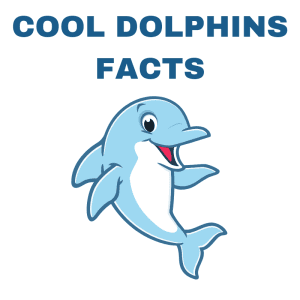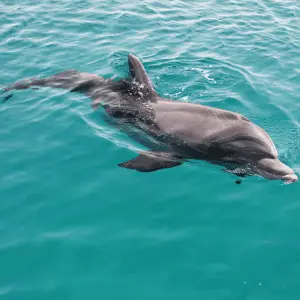The average lifespan of a dolphin is 25 to 35 years. However, the lifespan of a dolphin varies depending on the species. Orcas are the longest-living dolphin species and can live for more than 90 years. The lifespan of bottlenose dolphins is about 30 to 50 years.
The lifespan of dolphins living in captivity can vary depending on their health and living conditions, but generally, they live longer. Although living longer in captivity is questionable, living less and free would surely be better.
How To Find Out How Old A Dolphin Is
It is not as easy to find out the dolphin’s age as you may think it is. In captivity, it is easy for the observers to guess the age of the dolphins as, in most cases, they have been observing these marine animals since they were newborn babies.
There are some characteristic features of the dolphins that can give the observer an estimate of their age.
For example, you can check the cross-section of the dolphin’s tooth to find out how old the animal is. Dolphins come with only a single set of teeth, growing a little each year. So just like the growth ring you can observe in the trees, you can also see similar kinds of annual layers in the cross-section of the dolphin’s teeth.
So, if you can check the number of layers present in the cross-section of the dolphin teeth, it will be easier to estimate the dolphin’s age.
Even though the average lifespan of bottlenose dolphins is about 30 years in the wild, they can live for a long time. There is evidence of individual bottlenose dolphins living in the wild more than 60 years old.
It is also observed that female dolphins tend to live longer lives in the wild than their male counterparts.
Why do captive dolphins live longer?
Advancement in medical and husbandry science has significantly helped us improve the longer lifespan of dolphins living in captivity. This knowledge has helped us so much that, right now, the lifespan of bottlenose dolphins living in captivity is far better than the ones living in the wild.
Happiness
Although to live a longer life in captivity doesn’t necessarily outweigh their freedom compared to the wild dolphins. They are free to roam in their natural habitat in the wild, which is a much better experience for the dolphins, making them much happier and more content.
Baby Dolphins
Compared to the dolphins living in captivity, the wild population experiences a higher mortality rate in the first two years of their life. This is when the baby dolphins are most susceptible to predator diseases and the adverse effects of climate change.
Health Problems
For dolphins, the ocean can be a dangerous place to live. Even though the dolphins eat similar seafood to humans, they often suffer more health risks due to toxic algae in the seawater and the tainted water supplies. Like humans, dolphins can also suffer from health problems like diabetes, considered one of the biggest health threats that dolphins living in the wild face.
Like other animals, dolphins also suffer from several diseases and parasite infestation, which can lead to death. For example, dolphins can suffer from various bacterial, viral, and fungal infections.
They can also develop skin disease, stomach ulcers, heart problems, tumours, urogenital disorders, and respiratory troubles. The parasites that generally impact the health of dolphins living in the wild are fluke tapeworms and roundworms.
Between 1987 and 1988, more than 740 dead bottlenose dolphins washed up on the sea beaches of the United States. Experts assumed that the morbillivirus caused all these deaths of bottlenose dolphins.
Another virus that affects dolphins is the red tide toxin, created by a tiny marine organism known as dinoflagellates. It is one of the deadly viruses that can rapidly affect several different animals living in the same area simultaneously.
- Diabetes
- Parasite infestation
- Bacterial, viral, and fungal infections
- Toxins
- Morbillivirus
Predators
Even though sharks and dolphins try to avoid each other while living in the wild, large shark species are still considered the natural predators of these marine animals. Other than that, killer whales can sometimes prey on bottlenose dolphins, but these cases are sporadic. Even though stingrays are not the natural predators of dolphins, there is evidence that dolphin deaths occurred due to the infection trauma and poisoning caused by a stingray wound.
Stranded
Sometimes dolphins can die prematurely when these animals strand themselves on a beach. An individual dolphin usually gets stranded on the beach due to an injury or illness.
There have even been many mass strandings of dolphins. Such incidents, even though rare, can take place for several reasons.
- The dolphins can get stranded after they try to follow their leaders as it moves out of the water onto the shore.
- Dolphins use the earth’s magnetic field for navigation and can also strand themselves after magnetic field disturbances.
- The beach’s structure can also prevent the dolphins’ sonar from detecting the presence of the shore before they get stranded.
Recommended Read: Can Dolphins Survive on Land?
Human Impact
For dolphins, fishing nets can be significantly life-threatening. The monofilament gill nets are very dangerous to dolphins because it’s hard for them to detect the presence of these nets using their echolocation technique. Since dolphins need to come up to the surface to breathe, they can suffocate if tangled up by these nets.
Recommended Read: How Do Dolphins Sleep?
Every year about 300,000 dolphins and other cetacean animals face death or injury due to fishing practices.

